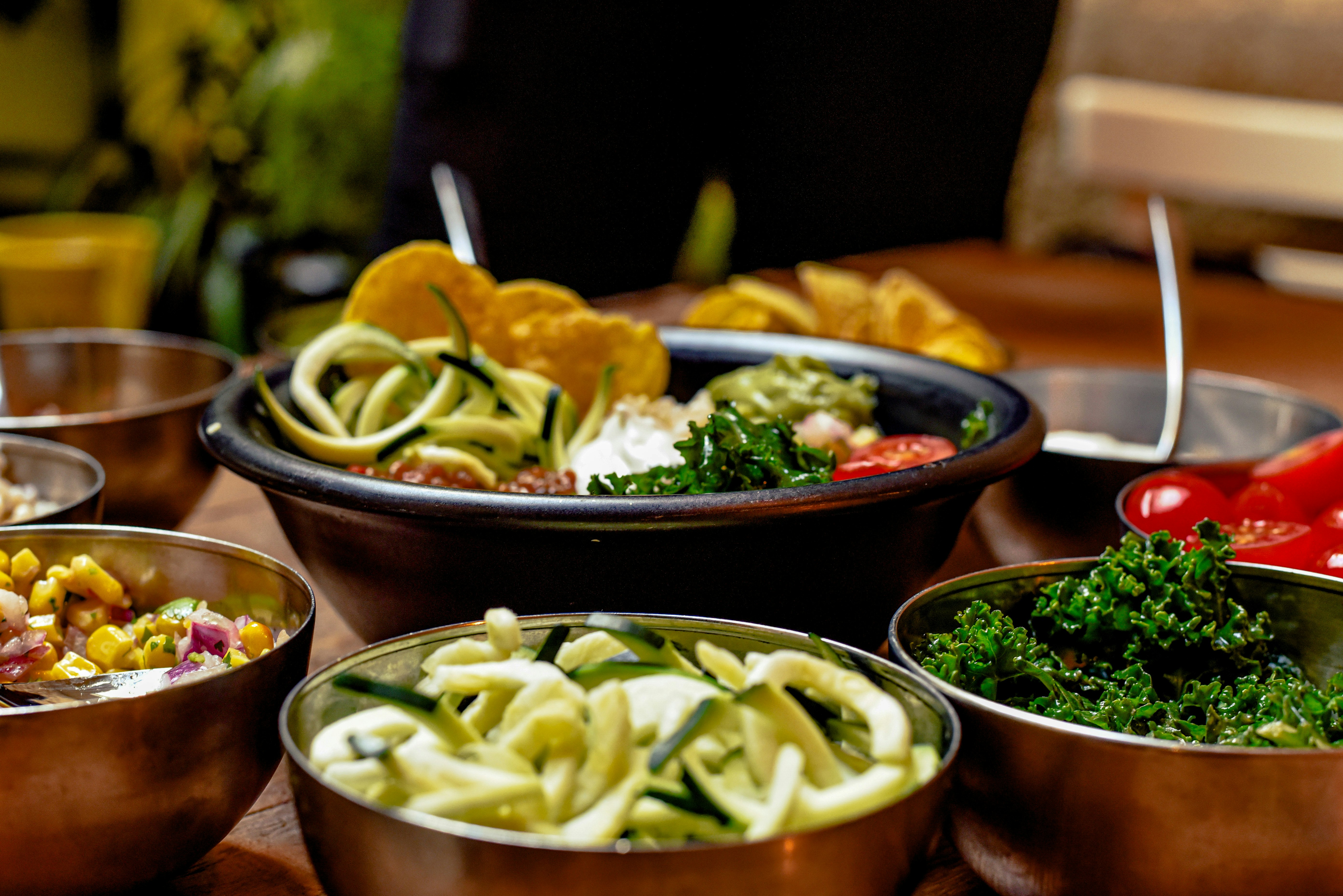

Welcome "The Bos Company"
Helping busy professionals give up the what's-for-dinner cycl, bust nutrition myths, and enjoy food again!

Nutrition strategies
Clients benefit from simple strategies, professional expertise and advice, enhancing their understanding of nutrition and healthy eating habits.

Personal program
Holistic approach to nutrition and lifestyle. Customized meal plans, incorporating coaching, support, and an emphasis on lifestyle factors unique to the client.

Find your balance
Emphasizes a holistic approach to nutrition. By encourporating lifestyle factors, clients can develop a well-rounded approach to their overall well-being, including mindfulness and balance.
Coaching & Support
Our programs are different because of their holistic approach to nutrition and lifestyle. While many meal plan programs focus solely on providing customized meal plans, our programs go beyond that by incorporating coaching, support, and an emphasis on lifestyle factors unique to our client.
WHAT WE DO
Our Expertize & Services
My Signature "For the Love of Food" Method

Nutrition
Customized meal plans are structured around Mediterranean Diet principles and have simple recipes that use quality ingredients and basic cooking techniques.

Lifestyle
It’s more than eating delicious wholesome foods. Regular physical activity and sharing meals with family and friends are also vital elements.

Support
Imagine having a personal chef at your fingertips. We will work together on breaking down that diet culture mentality, destroying those food rules, and getting back to loving food again!

Reflection
Looking back on what worked and what didn’t work each week allows us to celebrate our wins and discuss our challenges.
GET STARTED
Our Service Pricing
Appetizer
$50
BASIC PACKAGE
Meal Planning Assessment
Customized Recipe Collection
Meal Planning Template
Grocery Shopping Template
-
-
Main Course
$400
STANDARD PACKAGE
Meal Planning Assessment
Meal planning portal
Weekly Meal Plans
Grocery Shopping Lists
Private Chat Access
-
Full Service
$800
ADVANCED PACKAGE
Meal Planning Assessment
Meal planning portal
Weekly Meal Plans
Grocery Shopping Lists
Private Chat Access
VIP Day with Mary
Choose your program below to see how we can help
It's time to bring some fun back to the kitchen!

Whole-Food Cooking
A done-for-you program with simple recipes, a 7-day meal plan, and resources to teach you how to make home cooking simple while reducing your carbon footprint.

Mindful Eating
Using the principles of mindfulness, clients learn to recognize what triggers their eating. Learn to recognize the difference between physical and non-physical hunger and how to cope in a healthy way with both.

Stress Management
Giving your body the nutrition it needs is a positive step you can take every day toward combating stress. With the correct nutrition, you are better prepared to face the challenges of the day.

Back on Track
Give yourself a starting point to return to a healthy eating routine after the summer, holidays, and vacations. Get back on track with more nutritious whole foods while including a few convenience items to make things easier!

Eating Well with Pantry Staples
By strategically stocking your pantry with staples such as whole grains, legumes, canned goods, frozen vegetables and fruits, and spices, you can maintain a versatile and well-balanced diet.
.
Team
Meet Our BEST Team

Jane doe

Jane doe

Jane doe

Jane doe
Blog & Articles

Types of Salt
You don't need to have gone to culinary school to know that the flavour of a dish is crucial! Talk to any chef and one thing you will hear time and time again is the importance of seasoning your food. When we use the term "seasoning" in the culinary world, we are referring to something that enhances the natural flavours of the food - SALT. Not only does our food not taste right without it, but our bodies need it. Table salt consists of sodium and chloride ions. Our body uses it for auto-regulation of water and electrical signaling in the nervous system.
So now comes the question: how much salt should you use? A good rule of thumb is about 0.75% to 1% salt content by weight. But be mindful personal sensitivity and preference come into play. So for example, if you are making soup. Don't salt throughout the entire cooking process. Once the soup is complete, weigh the soup and multiply it by 0.0075, and add the resulting amount of salt. This won't be perfect, but it will give you a great starting point. One thing to be mindful of is whether you will be serving a dish hot or cold. When food is hot, a stronger flavour perception occurs. You will need to add less salt than if serving the same item cold.
So now that we know the importance salt plays in flavour. But how do you decide which one or ones you should have in your kitchen? Let's break it down. First off the chemical composition of salt is made up of 39.3% sodium and 60.7% chloride. There is no chemical difference between the various types of salt on the market. So what makes up the price difference? It all comes down to shape, including dense cubes, delicate flakes, and fragile pyramids.
Iodized Salt
Also known as table salt, this is what you will find in most salt shakers. It's made up of compact, dense crystals which dissolve slowly on your palate. This salt has 1% potassium iodide added to common table salt. This was to guard against goiter, which is a disease caused by an iodine deficiency. However, for anyone living in a first-world county, this is no longer necessary due to well-rounded diets consisting of diverse food choices. Now, one thing about iodine is that in high heat cooking applications, some of the iodine will oxidize or break down, and this gives off an acrid smell and flavour. Ever tasted food that left a metallic taste in the back of your throat? This could be why!
So since this makes iodized salt not the best choice for cooking, this means the only other option is to use it as a finishing salt. Finishing salts are sprinkled on foods right before they are served. But, if you remember, its shape is a dense, cube-like shape, which causes it to bounce off of food instead of adhering to it. Which is the most important trait needed for a finishing salt.
So, if it isn't good for cooking, and it isn't good for finishing, what is it good for? ABSOLUTELY NOTHING! This is why you will never find it in my kitchen, and why you should bother keeping it in yours.
Kosher Salt
Kosher salt should actually be called "koshering salt" because it in itself is not kosher, but in actuality, used to kosher meats. This is because of its jagged-crystal structure which sticks to the surface of the meat. Between this and the lack of iodine makes it the number one choice for chefs to use in their kitchens. Now, there are several types/brands of kosher salt, so my advice to you is to pick a brand and stick to it. This will allow you to get a feel for the salt and therefore, get comfortable with knowing how much to add to a dish.
Sea Salts
You need to be mindful that there is no set standard for labeling sea salt. So really, it could come from the sea, or it could come from a salt mine. That being said, there are some good ones on the market that are often used as a finishing salt. One of the more common being:
Fleur de Sel
It has a fragile, pyramid-like shape that when burst open by chewing, releases a wonderful salty sweetness. Because its chemical makeup is the same as kosher salt, just with a much heftier price tag, it is not ideal to be used during the cooking process, but instead used as a finishing salt on things such as fresh fruits, vegetables, salads, meats, and fish.
Himalayan Pink Salt
This is a marketing term created for halite, which is a mineral form of sodium chloride, or rock salt. The pink colour is caused by iron oxide. It has been sold in gourmet markets for years, frankly because it looks cool. Recently, a trend has started by health food influencers claiming that it is more healthy due to its high mineral content. While it's true that it does contain a lot of trace minerals, in order to reap the health benefits, the amount one would need to consume is completely unattainable. Now, I'm not saying that Himalayan pink salt is bad, I'm saying that if you are buying it for health benefits, you are wasting your money.
So to summarize:
Iodized salt is useless
Kosher salt is great for cooking
Fleur de sel should be used strictly for finishing a dish
Coloured salts like Himalayan pink salt look cool, but don't provide much flavour and aren't an effective mineral supplement
don't take our word for it
Highest customer satisfaction
Our customers come from all walks of life. Learn about their inspiring stories.

Jessica
Mary is open, supportive, and driven to ensure her clients are set up for success. I started working with Mary on my health goals a few months ago and I could not be more pleased!

Lesley
I fell in love with this girl when we worked together! You will too. Her love of health & nutrition is matched only by her love of people. If you have a big heart & want to make an even bigger difference in the world, Mary is your girl!
